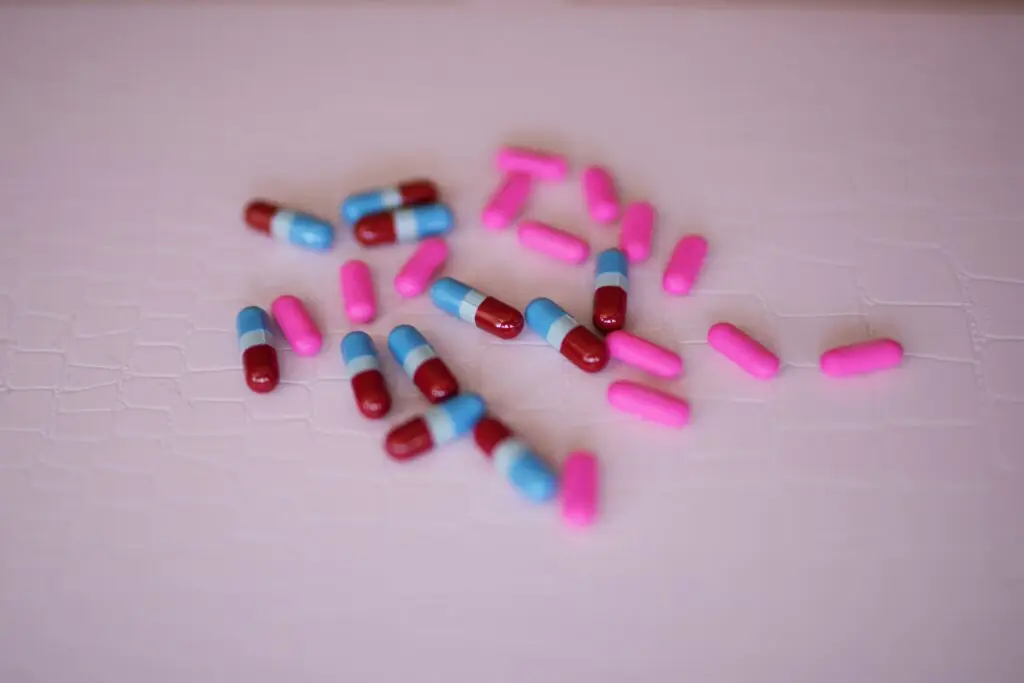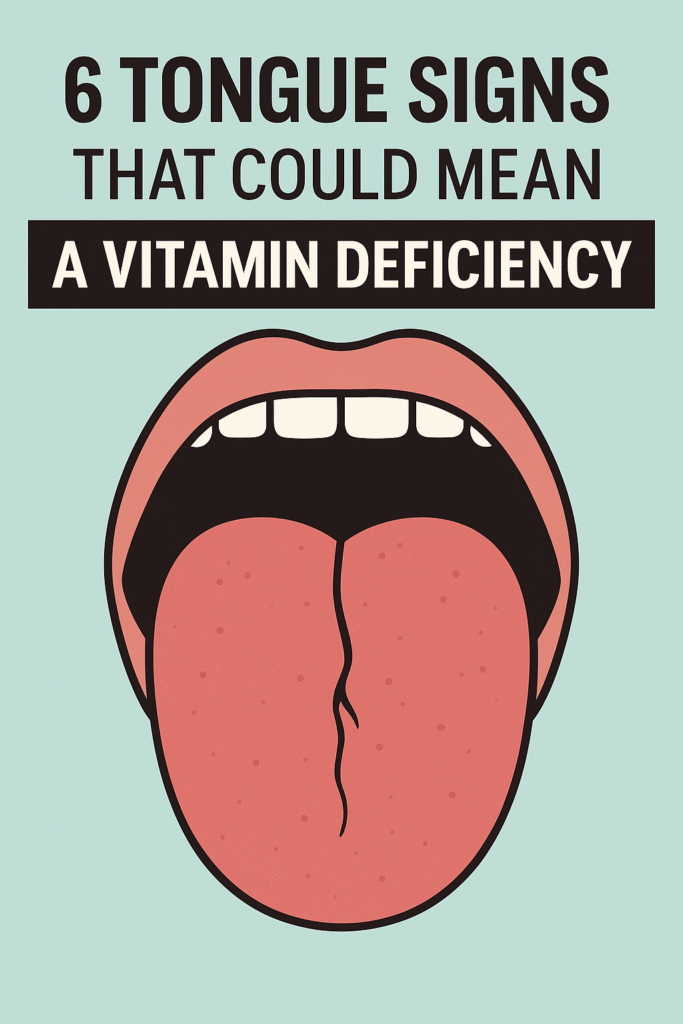
⚠️ Affiliate Disclaimer: This post may contain affiliate links, which means I may earn a small commission — at no extra cost to you — if you make a purchase through one of these links. I only recommend products or services I genuinely trust and believe can provide value. Thank you for supporting My Medical Muse!
7 Hidden Reasons Why Your Face Feels Hot Even When Blood Pressure Is Normal
You’re sitting quietly maybe reading, working on your laptop, or relaxing after a meal, when suddenly, you notice something strange.
Your face feels hot, almost like a mild sunburn spreading across your cheeks and forehead. You instinctively touch your skin, expecting it to be flushed, sweaty, or feverish but when you check your blood pressure, the reading looks perfectly normal.
That moment of confusion can be both uncomfortable and worrying. Many people instantly associate facial heat with high blood pressure, fever, or anxiety. So when your BP monitor says everything’s fine, you’re left wondering, What’s really going on?
Here’s the truth, a warm or flushed face doesn’t always mean your blood pressure is high. In fact, your body’s temperature, circulation, hormones and even emotions are controlled by complex systems that can all trigger facial warmth for different reasons.
Your skin is full of blood vessels and nerves and your face being highly vascular reacts quickly to internal and external changes. This means even subtle shifts in hormones, stress levels, or the environment can make your face feel unusually hot, even when your blood pressure is steady.
In this article, we’ll explore 7 hidden reasons why your face might feel hot even when your blood pressure is normal and we’ll help you understand:
- The real biological triggers behind that warmth,
- When it’s harmless, and
- When it might signal something deeper that deserves medical attention.
Let’s begin by uncovering one of the most common but often overlooked causes, your hormones.
1. Hormonal Fluctuations and Hot Flashes
Your body’s hormones are powerful messengers that regulate everything from metabolism to mood and yes, even temperature control. When these hormones fluctuate, especially estrogen, progesterone, or thyroid hormones, your internal thermostat can become overly sensitive, creating sudden waves of facial heat even when your blood pressure is perfectly normal.
Common Scenarios:
- Perimenopause or Menopause:
Many women notice intense waves of heat that start in the chest or face, often described as “hot flashes.” These episodes can last from a few seconds to several minutes and may come with sweating, flushing, or mild dizziness. Importantly, they are not directly linked to high blood pressure. - Thyroid Imbalance (Hyperthyroidism):
When the thyroid gland becomes overactive, it speeds up your metabolism. This overdrive raises your internal temperature, making your skin feel warm and flushed. People with hyperthyroidism may also notice fatigue, palpitations, or unintended weight loss. - Ovulation or PMS:
Around ovulation or during the premenstrual phase, brief hormonal surges can cause temporary warmth, facial sensitivity, or mild flushing, even in otherwise healthy young women.
The hypothalamus, located in your brain, acts as your body’s temperature regulator. Estrogen helps keep it stable. When estrogen levels drop, such as during menopause or hormonal fluctuations, the hypothalamus may mistakenly think your body is overheating. In response, it widens the blood vessels near your skin’s surface (especially in your face, neck, and chest) to release heat.
That sudden increase in blood flow causes the flush of warmth you feel, even though your actual body temperature hasn’t changed significantly.
What You Can Do:
- Dress in layers: So you can quickly adjust to changes in temperature.
- Avoid triggers: Spicy foods, caffeine, and alcohol can worsen hot flashes.
- Stay hydrated: Dehydration intensifies heat sensations.
- Cool-down methods: Keep a cool towel or mist spray handy.
- Medical evaluation: If hot flashes or facial warmth are frequent or interfere with sleep, talk to your doctor. They might recommend hormonal testing or therapies to stabilize fluctuations.
Hormone-related warmth is rarely dangerous, but it’s one of the most common explanations especially in women over 35 or in those experiencing thyroid changes.
2. Anxiety, Stress, or Emotional Surges
If your face gets hot during moments of nervousness, embarrassment, or sudden stress, you’re not imagining it, it’s your sympathetic nervous system kicking in.
This part of your body’s “fight-or-flight” system reacts instantly to emotional or psychological triggers, preparing you to respond to perceived threats or tension. One of its side effects is facial vasodilation, the widening of blood vessels in your face and neck, which increases blood flow and produces that unmistakable warm sensation.
The Science Behind It
When you experience anxiety or emotional stress, your adrenal glands release adrenaline (epinephrine) and noradrenaline (norepinephrine) into the bloodstream. These stress hormones trigger:
- A rapid heartbeat,
- Slight increase in breathing rate,
- Increased blood flow to the skin’s surface, especially the face, ears, and neck.
Interestingly, even though your heart may beat faster, your blood pressure doesn’t necessarily rise significantly. That’s because your body’s internal regulators quickly stabilize it once the adrenaline rush subsides. The result? A sudden wave of heat in your cheeks or a warm “blush” that fades as your stress levels drop.
Why It Feels So Hot
The combination of emotional tension and increased facial blood flow can create several sensations:
- A tingling or tightening feeling in the cheeks.
- A burning warmth without visible redness.
- Warm ears or neck, especially during social or stressful events.
- A fluttery or restless feeling, the classic adrenaline effect.
You might even feel slightly sweaty or lightheaded, especially if you hold your breath when anxious.
Symptoms That Often Accompany It
- Facial warmth or flushing that appears during social situations or intense emotions. Mild trembling or restlessness.
- A feeling of “heat from within” that fades once you calm down.
- Sometimes, a combination of chest tightness or butterflies in the stomach.
Relief Tips:
Managing anxiety-related warmth isn’t about cooling your skin, it’s about calming your nervous system. Here are simple but powerful techniques:
- Deep breathing (Box breathing): Inhale for 4 seconds, hold for 4, exhale for 4, hold again for 4. This balances oxygen and slows your heart rate.
- Cool compresses: Apply a cool cloth or mist to the face and neck for instant relief.
- Mindfulness and grounding: Focus on your surroundings, what you can see, hear, or touch to shift your mind away from stress.
- Stay hydrated: Anxiety can increase sweating, leading to mild dehydration that amplifies warmth.
- Therapy or relaxation training: If stress-triggered flushing happens often (like social blushing), cognitive-behavioral therapy (CBT) or relaxation exercises can be extremely effective.
Anxiety-related facial heat is harmless and common, but chronic stress can make it more frequent. Learning to manage emotional triggers can dramatically reduce how often you experience these “hot face” episodes.
3. Rosacea or Sensitive Skin Conditions
If your facial heat comes with redness, visible veins, or tiny bumps, the culprit might be rosacea, a chronic inflammatory skin condition that makes the face unusually sensitive and reactive.
Rosacea is common, but it often goes undiagnosed because many people mistake it for acne, sunburn, or simple skin irritation. What sets it apart is how easily your face flushes or feels hot, even in mild weather or after light exercise.
Common Triggers
- Hot or cold weather changes
- Sun exposure without protection
- Alcohol, caffeine, or spicy foods
- Stress or emotional strain
- Vigorous exercise or hot showers
Even skincare products containing alcohol, menthol, or fragrance can worsen rosacea flares.
How It Causes Facial Warmth
Rosacea leads to chronic inflammation of the tiny blood vessels (capillaries) in your skin. Over time, these vessels become wider and more reactive. As a result, your face may flush easily, feel warm or even burn slightly even though your core body temperature and blood pressure are completely normal.
During flare-ups, you might notice:
- A tingling or stinging feeling across your cheeks, nose, or chin.
- Persistent redness that doesn’t fade quickly.
- Bumps or visible thread-like veins (telangiectasia).
How to Manage It
Managing rosacea is about calming the skin and avoiding triggers that make it flare.
- Use gentle skincare: Stick to fragrance-free cleansers and moisturizers labeled “for sensitive skin.”
- Avoid extremes: Hot showers, intense sun, and freezing air can all trigger heat sensations.
- Protect your skin: Always use sunscreen with SPF 30 or higher.
- Consult a dermatologist: They may prescribe topical treatments like metronidazole gel, azelaic acid, or ivermectin cream, which reduce inflammation and redness.
- Try cooling products: Aloe vera gel or green tea extract (non-alcoholic versions) can soothe the skin naturally.
Rosacea doesn’t directly affect blood pressure, but it can make your face feel warm daily. Treating it early helps prevent long-term redness and visible vessels.
4. Medication Reactions or Side Effects
Sometimes, that sudden feeling of facial heat has nothing to do with your body’s natural functions, it’s a side effect of medication.
Certain drugs widen blood vessels (a process called vasodilation) or affect your body’s ability to control temperature, leading to a warm or flushed sensation on the face even though your blood pressure remains perfectly normal.
Common Culprits
- Niacin (Vitamin B3): Known for causing a “niacin flush”, a harmless but intense warmth and redness lasting 15-30 minutes after taking it.
- Calcium Channel Blockers: Blood pressure medications like amlodipine or nifedipine can relax blood vessels in the face, leading to mild flushing.
- Steroids or Hormonal Treatments: Long-term use of corticosteroids or hormone-based therapies can alter your body’s heat regulation.
- Vasodilators: Drugs used to improve circulation or treat chest pain (like nitroglycerin) can temporarily increase facial blood flow.
- Certain Diabetes or Anxiety Medications: Some drugs influence the nervous system or blood vessel tone, occasionally causing warmth or tingling.
These medications trigger dilation of the small blood vessels near your skin, especially in your cheeks and forehead. This results in temporary warmth, redness, or tingling, even though your overall blood pressure remains within a healthy range.
What You Can Do
- Track timing: Note when the heat occurs, right after taking a new medication or supplement?
- Don’t stop medication suddenly: Always consult your doctor before making changes.
- Ask about alternatives: Sometimes, switching to a different formulation or dose can stop the flushing entirely.
- Hydrate and stay cool: Drink plenty of water and avoid taking certain meds (like niacin) on an empty stomach to minimize the effect.
If the facial heat is severe, persistent, or accompanied by dizziness or rash, your doctor might run a quick review of your prescriptions and recommend adjustments.
5. Environmental and Lifestyle Factors
Not all causes of facial warmth are internal, sometimes, your surroundings or daily habits are to blame.
You might notice your face feeling hot after a long day outdoors, after a spicy meal, or even during moments of excitement or laughter. These are perfectly normal physiological responses, your body’s way of managing heat and circulation.
Common External Triggers
- Hot weather or humidity: Prolonged exposure expands facial vessels.
- Spicy or hot meals: Capsaicin (in chili) stimulates heat receptors in the face.
- Alcohol: Even a small amount can cause transient vasodilation (especially red wine).
- Exercise or sauna use: Physical activity increases blood flow to the skin to cool you down.
- Dehydration: Low hydration reduces your body’s ability to regulate temperature, making you feel warmer overall.
Even emotional warmth, laughter, joy, or affection can subtly increase facial circulation and create a pleasant flush. Your body’s internal thermostat constantly balances temperature through a process called thermoregulation. When it detects heat, it sends more blood to the skin surface to release warmth, particularly in the face, where blood vessels are abundant.
This localized vasodilation explains why your face might feel hot or flushed while the rest of your body feels normal.
Cooling Fixes:
- Stay hydrated: Dehydration makes your body overheat faster.
- Avoid alcohol and spicy foods before social or outdoor events.
- Cool your environment: Use fans, air conditioning, or cold packs on your wrists and neck.
- Rinse your face with cool water after exercise or heat exposure.
- Choose breathable fabrics: Cotton and linen help your skin cool naturally.
If facial warmth happens mostly in hot weather or after specific meals, it’s a normal reaction, not a blood pressure issue.
6. Nerve-Related Causes (Facial Neuropathy or Overreactive Nerves)
Your face is one of the most sensitive areas of your body, packed with sensory nerves, especially the trigeminal nerve, which controls sensation in your forehead, cheeks, and jaw.
Sometimes, these nerves become overactive or irritated, leading to odd sensations like heat, tingling, or mild burning, even when your skin’s actual temperature is normal.
Possible Triggers:
- Nerve irritation from dental work, sinus infections, or minor trauma.
- Post-viral inflammation, such as after a cold or shingles (herpes zoster).
- Migraine aura or trigeminal sensitivity, where nerves misinterpret normal sensations as heat or pressure.
- Stress and fatigue, which lower your pain threshold and make the face more reactive.
People describe nerve-related facial heat differently:
- A sudden “flash” of warmth or burning on one side of the face.
- Tingling or electric-like sensations without visible redness.
- A patch of heat that comes and goes within seconds or minutes.
Unlike hormonal or environmental causes, nerve-related warmth often affects just one side and may appear randomly.
When to Seek Help
If your facial warmth is accompanied by:
- Numbness,
- Pain or burning,
- Facial drooping, or
- Weakness,
see a doctor immediately. These symptoms could signal nerve inflammation, trigeminal neuralgia, or even a mild neurological event like Bell’s palsy.
What Helps:
- Cool compresses: Calm irritated nerves and reduce discomfort.
- Avoid sudden temperature changes: Cold-to-hot or hot-to-cold transitions can aggravate symptoms.
- Gentle massage or relaxation: Helps ease facial muscle tension that irritates nerves.
- Neurological evaluation: If symptoms persist, a neurologist may recommend nerve-calming medications like gabapentin or pregabalin to reduce sensitivity.
Nerve-related warmth is uncommon but can feel intense. The good news? With proper diagnosis and care, it’s highly manageable.
7. Circulatory or Autonomic Imbalances
Your autonomic nervous system (ANS) controls involuntary actions like heart rate, blood vessel tone, and sweating. When the ANS misfires, even slightly your face may flush or feel hot for short periods.
Conditions Linked to This
- Dysautonomia or POTS (Postural Orthostatic Tachycardia Syndrome)
- Vasovagal responses (like standing up quickly or stress-induced faintness)
- Heat intolerance from mild dehydration or fatigue
Your ANS may temporarily dilate blood vessels in the face or neck as part of an exaggerated cooling response, even though your overall circulation and blood pressure remain normal.
Relief Tips:
- Stay hydrated and maintain good electrolyte balance.
- Avoid standing too quickly or staying in hot environments too long.
- Light exercise like walking or stretching improves circulation control.
When to Worry About a Hot Face
Most cases of facial heat with normal blood pressure are benign and temporary, but you should seek medical advice if you notice any of the following:
- Persistent or worsening redness, pain, or burning.
- Associated dizziness, fainting, or blurred vision.
- One-sided numbness, weakness, or drooping (possible nerve issue or stroke warning).
- Hot flashes accompanied by palpitations or unexplained sweating.
- Reaction after a new medication or supplement.
Your doctor may recommend blood tests (for thyroid, hormone, or liver function), skin evaluation, or a neurological exam depending on your symptoms.
Natural and Home Remedies to Soothe a Hot Face
If your blood pressure is normal and your doctor rules out serious issues, simple home measures can help control warmth and discomfort:
- Cool Compresses: Apply a damp, cool cloth to your cheeks and forehead for 5-10 minutes.
- Gentle Skincare: Use fragrance-free, non-alcoholic cleansers and moisturizers.
- Stay Hydrated: Drink water regularly; dehydration worsens heat sensations.
- Mindful Breathing: Helps reduce stress-induced vasodilation.
- Avoid Triggers: Note what causes the warmth, like spicy food, caffeine, or stress.
- Balanced Diet: Magnesium and vitamin B6 help with nerve regulation and hormone balance.
- Sleep Well: Fatigue amplifies stress responses and heat perception.
Medical Treatments (If Needed)
If home remedies don’t work, your doctor might suggest:
- Topical creams for rosacea (metronidazole, azelaic acid).
- Beta-blockers or SSRIs for frequent anxiety-related flushing.
- Hormonal therapy if menopause or thyroid imbalance is involved.
- Nerve-calming medications (like gabapentin) for neuropathic facial heat.
Treatment depends on identifying the root cause, so don’t self-diagnose based on symptoms alone.
Summary: Understanding Your Body’s Heat Signals
When your face feels hot but your blood pressure is normal, your body is likely responding to something other than hypertension such as hormones, stress, nerves, or skin sensitivity.
In most cases, it’s your body’s natural way of balancing internal or external changes. However, chronic or unexplained heat sensations should always be checked by a healthcare professional.
Key Takeaways
- Facial warmth doesn’t always mean high blood pressure.
- Common causes include hormones, stress, rosacea, medications, and nerves.
- Tracking your triggers helps identify patterns.
- Most cases are harmless and respond to cooling and stress-relief methods.
- See a doctor if symptoms are severe, persistent, or one-sided.
👩⚕️ Need Personalized Health Advice?
Get expert guidance tailored to your unique health concerns through MuseCare Consult. Our licensed doctors are here to help you understand your symptoms, medications, and lab results—confidentially and affordably.
👉 Book a MuseCare Consult NowRelated Blog Post You Might Like:
- 10 Steps on How to Track Blood Pressure at Home Accurately
- 10 Life-Changing Morning Habits That Naturally Lower Blood Pressure
- 7 Powerful Reasons Why You Feel Weak After Taking Blood Pressure Medication And Easy Fixes
- Can stomach ulcers cause heart palpitations? 7 Hidden Ways and solution
- 7 Powerful Reasons Why You Are Craving Salt and What Your Body Is Trying To Tell You
- 7 Surprising Reasons Why Your Body Temperature Keeps Changing Randomly


